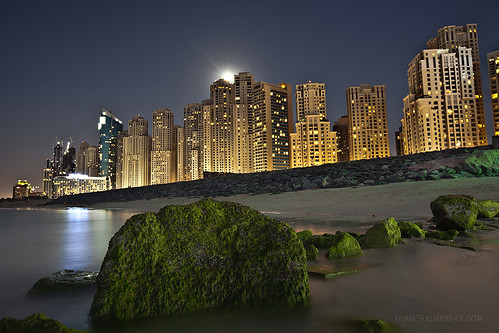Dubai is primarily thought of as a financial and business hub for both the United Arab Emirates (UAE) and the Gulf region at large, given its incredibly rapid development and attractiveness for investors outside the region. These advances have brought Dubai fame primarily for its innovative buildings and extravagant man-made islands. However, in recent years, Dubai has been going green and attempting to take a more sustainable approach to development. Like its previous development, Dubai’s green efforts are uniquely innovative and forward thinking.

Sustainable Building Techniques
Architects in Dubai have made efforts to use construction techniques that are green in addition to being visually appealing. For example, recent development projects have relied more heavily on recycled materials, thus reducing waste in construction and giving these products new life. Skyscrapers might employ solar energy (taking advantage of the considerable sunlight in Dubai) and wind energy to reduce the city’s reliance on less sustainable energy sources. More futuristic building techniques involve planning for structures that will actually be situated at sea, taking advantage of solar, wind, and hydroelectric power to maintain a completely sustainable building. A Representative from AAJ Property in Dubai, a real estate business in the area, was asked why Dubai is employing more green techniques and their response was that “Dubai as a whole was attempting to support a more sustainable future”.

Natural Urban Planning
While the current Dubai skyline is certainly visually stunning, it is also not very well integrated into the natural environment: the spread-out buildings seem to be islands of habitability in an otherwise unforgiving desert. In order to make future development projects truly sustainable, architects and urban planners in Dubai have been examining ways to make Dubai’s buildings completely compatible with the desert landscape so prevalent in the UAE. For instance, the Xeritown development in the area of Dubailand is an example of architects working to use the environment to the advantage of their design. Buildings in Xeritown are oriented in a way to maximize street exposure to cool, Northwesterly breezes. The uneven skyline can both improve airflows and maximize shade from the brutal sunshine that Dubai would otherwise receive. By orienting the city to the Northwest, buildings are well suited to solar energy and can be far more sustainable than skyscrapers dependent on fossil fuels. On a building-specific level, Xeritown buildings have significant awnings to keep retail areas in the shade, and freestanding circular structures allow pedestrians to easily duck out of the sun. Thus, the development is an effort to move from building-based sustainability to community-based sustainability. Dubai’s previous development efforts over the last few decades were seen by many to be relatively unsustainable, given the immense energy needs of its extravagant buildings and massive skyline. However, these recent developments have constituted something of a sea change for this unique city as it makes more aggressive efforts to be greener.

